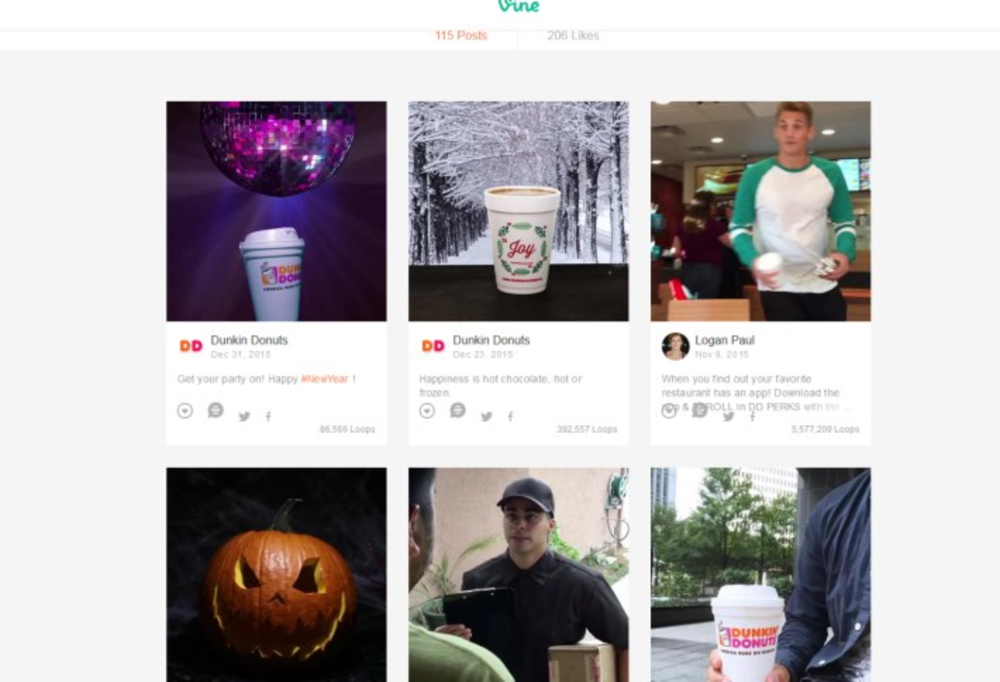News about Twitter’s decision to discontinue Vine has been looping throughout the internet. Media outlets (see here and here) have reported on how Vine’s demise impacted influencers—or rather how influencers impacted Vine’s demise, with many fleeing to other platforms like Facebook and Instagram.
But what about the brands that hired those influences? What kind of role (if any) did Vine play for them, and what did they learn from the social platform’s termination?
For Dunkin’ Donuts, Vine offered a way for the coffee and doughnut chain to engage on-the-go, mobile consumers—and lots of them. At the time of this writing, Dunkin’ Donuts had 73,500 Vine followers.
“If our fans were having a busy day and turned to Vine for a quick pick-me-up, we hoped that a six-second Vine from Dunkin’ would make them smile and keep them going,” says Melanie Cohn, the brand’s social media strategy lead.
Cohn says that Dunkin’ Donuts did invest in the platform, as it does in all of its social channels. For instance, it hired social media celebrity Logan Paul to promote its app and loyalty program, DD Perks, in November 2015. According to AdAge, Paul had more than 8.7 million followers on Vine at the time, and the short video he produced for Dunkin’ Donuts generated nearly 5.6 million loops.
The company also created TV billboard ads from Vine videos, which aired during ESPN’s Monday night football pregame show, Adweek reports. The company then supplemented these ads with online Vine videos that showed coffee cups recreating a game play. Viewers were encouraged to share the videos along with the hashtag #DunkinReplay. Dunkin Donuts received recognition as a finalist in the sixth annual Shorty Awards for this initiative and generated more than 198,000 replies, retweets, and mentions, according to the social media award’s website.
Overall, Cohn says that Dunkin’ Donuts used Vine to support contests, promotions, and content. However, the real-time and video-sharing capabilities that once attracted Dunkin’ Donuts to Vine quickly became adopted by Snapchat, Instagram, and Facebook Live, she says. And on December 31, 2015, Dunkin’ Donuts produced its last Vine video.
Cohn says that Twitter’s decision to discontinue Vine highlights the competitive nature of social platforms and emphasizes their fight for marketshare and users—let alone brands.
“The social and digital landscape is a fast-paced environment,” she says, “and for a brand to stay relevant they need to have fun engaging with their fans on all platforms, and not be afraid to try something new.”
And if there’s one lesson marketers can take away from Vine’s demise, she says, it’s that they need to stay on top of emerging social trends—a lesson she not only preaches but also practices at Dunkin’ Donuts. Not only does the brand have a presence on Facebook, Instagram, Pinterest, Twitter, and the company’s blog, but it also recently announced the debut of brand stickers, available for iOS 10 customers.
“We are driving engagement across multiple channels and devices to meet our guests where they are,” Cohn says.
Still, all hope for Vine may not be lost. Recent media reports say that Twitter may be in talks to sell Vine.







